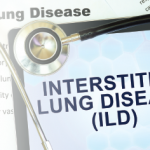Very Early Rheumatoid Arthritis as the Model
The therapeutic march backward, toward the point of disease inception, is well exemplified by the history of rheumatoid arthritis therapeutics. The 1958 revision of the American Rheumatism Association criteria was focused on identifying the epidemiology of rheumatoid arthritis, by dividing patients into four categories: classic, definite, probable and possible.3 Realizing that patients with classic rheumatoid arthritis also likely had developed a substantial amount of irreversible disease, the race was on to identify patients at earlier stages of development. The 2010 ACR/EULAR rheumatoid arthritis classification criteria are now old-hat: the push now is to identify patients with so-called “very early rheumatoid arthritis” to treat.
In medicine, as in life, it is often too early to act, until it is suddenly—irrevocably—too late. In clinical therapeutics, the trick is to catch patients at the inflection point, the moment at which the patient’s health is transitioning from good to bad.
The ERA (Early Rheumatoid Arthritis) trial defined early rheumatoid arthritis as disease that was present for less than three years.4 The AVERT (Assessing Very Early Rheumatoid Arthritis Treatment) trial defined very early rheumatoid arthritis as disease that was present for less than two years.5 Long-term follow-up from the ERA trial demonstrates that early use of biologic therapies can decrease the cumulative amount of damage suffered by patients with rheumatoid arthritis. The AVERT trial indicates that even earlier use of biologics may cause some patients to enter a sustained, drug-free remission.
That’s the dream. Every drug, no matter how benign, has side effects. The idea that using a biologic now for a limited period of time may prevent a patient from needing to take a shot or a pill for the next several decades is extraordinary.
Perhaps we have been dreaming too small. The Prevention of Clinically Manifest Rheumatoid Arthritis by B-Cell Directed Therapy in the Earliest Phase of the Disease (PRAIRI) study looked at whether we could prevent patients from developing rheumatoid arthritis in the first place.6 This study took 89 patients to clinics in the Netherlands with arthralgias (but not arthritis), and randomized them to receive either 1 gram of intravenous rituximab or placebo. All patients also received 100 mg of intravenous methylprednisolone.
The overall risk of developing clinical arthritis after a median of 29 months of follow-up was 40%. Treatment with a single dose of rituximab reduced the risk of developing arthritis at 12 months by 55%. Unfortunately, the effect was not permanent: The patients in the placebo group developed arthritis after a median time of 11.5 months. The patients who received rituximab developed arthritis after a median period of 16.5 months.
From a conceptual standpoint, this is intriguing: It is fascinating to think a single dose of rituximab may hold off the cascade of events that leads to a clinical diagnosis of rheumatoid arthritis, even if only for a little bit of time. Longer term, if the investigators could demonstrate the single dose of rituximab leads to some long-term benefit, such as less aggressive disease or fewer erosions, we might be even more intrigued.
From a practical aspect, just think of all the patients that you see in your clinic with arthralgias. Now imagine going through the pre-approval paperwork to get each of those patients their single dose of rituximab. The mind reels.
The trick, of course, will be to learn how to distinguish the progressers from the non-progressers. If 40% of patients developed arthritis, then it stands to reason that 60% did not. Although it is possible those patients may have, eventually, developed arthritis as well, it seems equally possible they would have done just as well if left completely alone.
Actually, that group would have done even better. According to the Cochrane group, the number needed to harm for rituximab, when used for the treatment of rheumatoid arthritis, is seven.7 This means only seven patients need to receive rituximab for one of them to suffer as a result. When I can see the disease in front of me, this is a number I can live with. When the risk is theoretical and statistical, however, I may lose my nerve.



